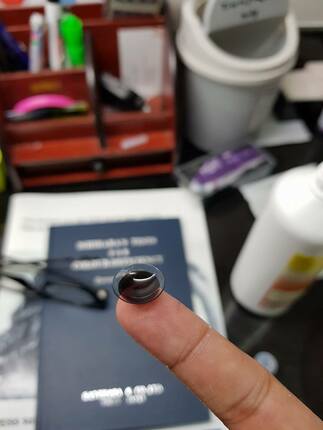Prosthetic Contact Lenses
There are times when an eye is damaged beyond repair, but isn't too damaged that the removal of the eyeball is necessary. There are some people with cases like these that are looking for ways to conceal their damaged eyeball. This is where a Prosthetic Contact Lens comes in.
What is a Prosthetic contact lens?
 a Prosthetic Contact Lens ready to be fitted
a Prosthetic Contact Lens ready to be fitted
A Prosthetic contact lens is a type of contact lens which is used to mask a damaged eyeball. Unlike the usual soft contact lenses which are used to correct vision or change the color of someone's iris, a Prosthetic Contact Lens has a more opaque design and is used most of the time to cover a damaged Cornea.
Indication/s
Use of Prosthetic Lens
Indication/s
Use of Prosthetic Lens
- Corneal Abnormalities
- As a patch during vision therapy
- Trauma or post-surgical complications
- Reduce glare/photophobia
- Iris Abnormalities
- Pupil Abnormalities
- Phthisis Bulbi

Dr Mark Paroli is a Licensed Doctor of Optometry in the Philippines who has special interest in Prosthetic Eye fitting, Low Vision Rehabilitation, Hard and Soft Contact Lens. He has been fitting custom made Artificial eyes in the Philippines for more than ten years.
[email protected]
[email protected]
